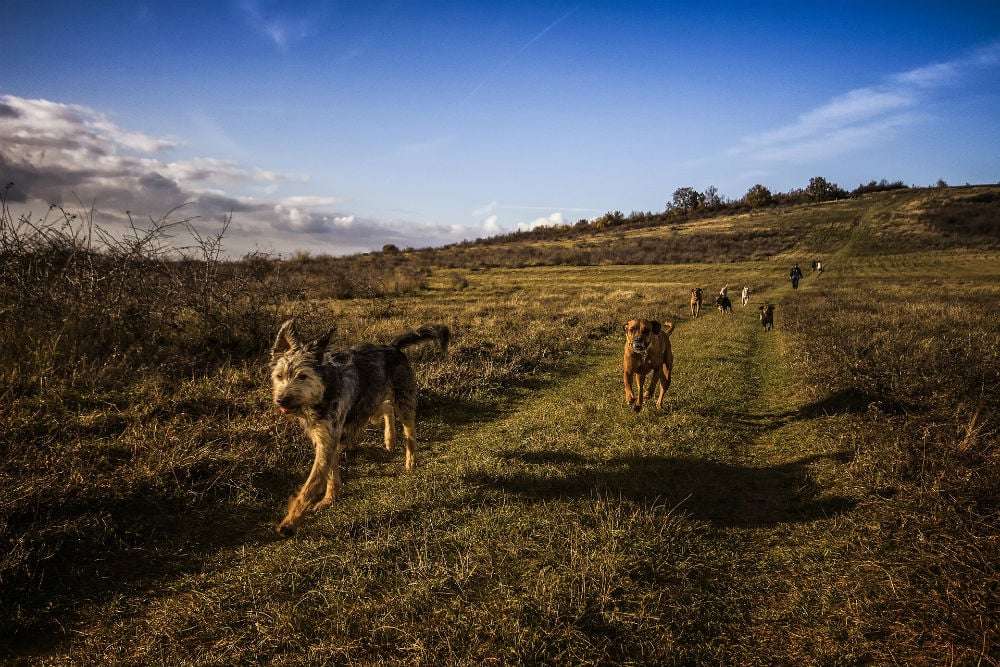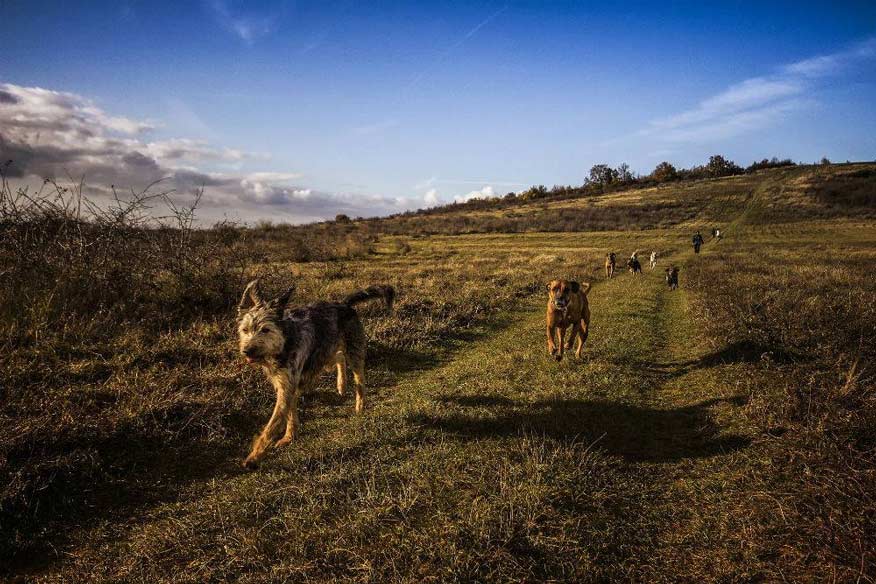If you see yourself as a lover of the planet, the chances are that you’d steer clear from a gas-guzzling four-by-four; you’re also likely well aware of the impact of not recycling and the danger of the many chemicals that are hidden within household goods. What you’ve probably not considered, is the damage on the planet caused by your beloved pooch. And yet the threat is very, very real – with each of our tail-wagging, mud-loving dogs leaving a carbon pawprint of 2.1 acres. This alone sounds staggering, but when this amount is considered against the average 1 acre created by an SUV (The New Scientist), the environmental damage caused by Fido becomes even more intimidating. So, what exactly can be done to drive down the devastating effect that America’s 70-80 million dogs are having on our world? (ASPCA). Luckily, there’s plenty of steps you can take to make Rocky an eco-warrior just like his human mummy and daddy.
Making sense of that carbon paw print
You’re likely wondering just how a cute bundle of fur can rack up such an IOU to the planet. In answer to this, we need to look at the diet of an average dog. Typically, our canine pals chomp on around 360 pounds of meat each year, with a further 210 pounds of their diet consisting of cereal (New Zealand’s Victoria University of Wellington). The product of meat and grains command staggering amounts of energy – much of it processed and powered by fossil fuels. Add to this the packaging and shipping all over the world and suddenly that carbon paw print seems to make sense.
Then there are other items that your dog needs – a collar, bowl, brush, poop bags – the list is endless. In fact, so significant is this list, that the resources that an average dog demands can quickly add to the CO2 output of their diet – with few items designed to be eco-friendly, instead created from unhelpful materials that take forever and an age to break down when they’re inevitably sent to landfill.
But we’re not going to suggest for one minute that you ship Bailey, Max, or Buddy off to the dog pound. Instead, we’re going to give you the following top tips for loving the planet and your dog.
1. Dog Food – Do your research
By and large, the vast majority of dog food manufacturers lack any green credentials whatsoever. This is none so surprising given that they’re in the business of food manufacturing with an eye on price point, and price point alone. And yet there are the exceptional few that do – take Mars as an example – you may know their ‘Pedigree’ brand of dog food (they also produce ‘Whiskas’ for cats). This is a brand that employs wind energy to power their food production and boasts of being the “first sustainable pet food manufacturing facility in the world”.
But then again, there is an alternative to buying dog food at all – and it could very solve some of your own eco shortfalls…
2. Waste want not – Your pooch can help you become all the greener
The average American household throws away $640 of food every year (USA Today) – food that could have otherwise gone toward feeding the pet pooch. Given that dogs benefit from a diet of unprocessed meat and veg (as compared to the practically unknown contents of the average dog) this seems like an easy win all round – for the planet, for your own carbon footprint, and for the pet dog who’ll likely appreciate a seeming upgrade in his diet.
3. From one form of waste to another – scoop up that poop eco-style
What do you use to bundle your dog’s poo up once they’ve done their business out and about? In all likelihood, you use a plastic bag that won’t breakdown in the landfill for 50 years+. Today, many poop bags on the market are not only bio-degradable but are actually flushable as well. This adds an extra green bonus, as your dog waste won’t need to be hauled away by the trucks that collect the local garbage.
4. Don’t leave your waste behind
You should always (always) make sure that you pick up after your dog by remembering your poop bags and keeping an eye on them when off the lead. Not doing so can lead to further issues that are caused when fecal matter mixes in waterways such as streams and rivers. Known as Eutrophication, this problem involves the poisoning of aquatic life – and it’s thought that between 10 and 20% of this widespread issue is caused simply by the forgetfulness of pet owners.
5. *Gulp* Spay or neuter your furry friend
America has a serious problem with dog and cat overpopulation – with more than 2.4 million perfectly healthy critters being put down every year (equating to one every 13 seconds [Humane Society]).
Being a responsible dog owner means that you mustn’t add to this epidemic sized problem – even if you were to give any resulting pups to loving homes, the family tree that emerges from one litter can rapidly turn into tens of extra dogs on the streets or in shelters.
6. Adopt your dog from a shelter
Breeders are only in business because there is demand – if every dog were sourced from a shelter the overpopulation issue would soon become a thing of the past. Besides, providing a home for a dog in need goes beyond simply being green – to providing a pet with a second chance at happiness.
7. Go green for your pet accessories
The pet realm may have taken a while to catch onto the green trend, but now that they have, there are very few items that can’t be found that are kind to the planet – think hemp dog collars and leashes; eco-friendly pet shampoo, and organic treats. Good places to start include the Eco Dog Company; Ethical Pets and Earthdog.
How green is your dog? Do you have any must-know tips for ensuring your furry friend is as kind to the planet as you are? If so, we’d love to hear them!
If you have to resist any questions, please contact us!

About the Author
Jen is your go-to guru for crafting a cozy, green cocoon. 🪴 Her dive into sustainable building wasn’t just about saving the planet—it started as a mission to make family movie nights eco-friendly (and to ensure the popcorn was the only thing getting heated!). With a knack for breaking down the jargon, Jen turns eco-lingo into everyday language. Swing by the Green Living blog for a mix of earth-loving advice and home improvement hacks. Whether you’re just dipping your toes into green waters or you’ve been swimming in the deep end of DIY projects, Jen’s here to guide, giggle, and remind you that every eco-choice is a step towards a planet that thanks you… and maybe even sends a rainbow your way! 🌈


